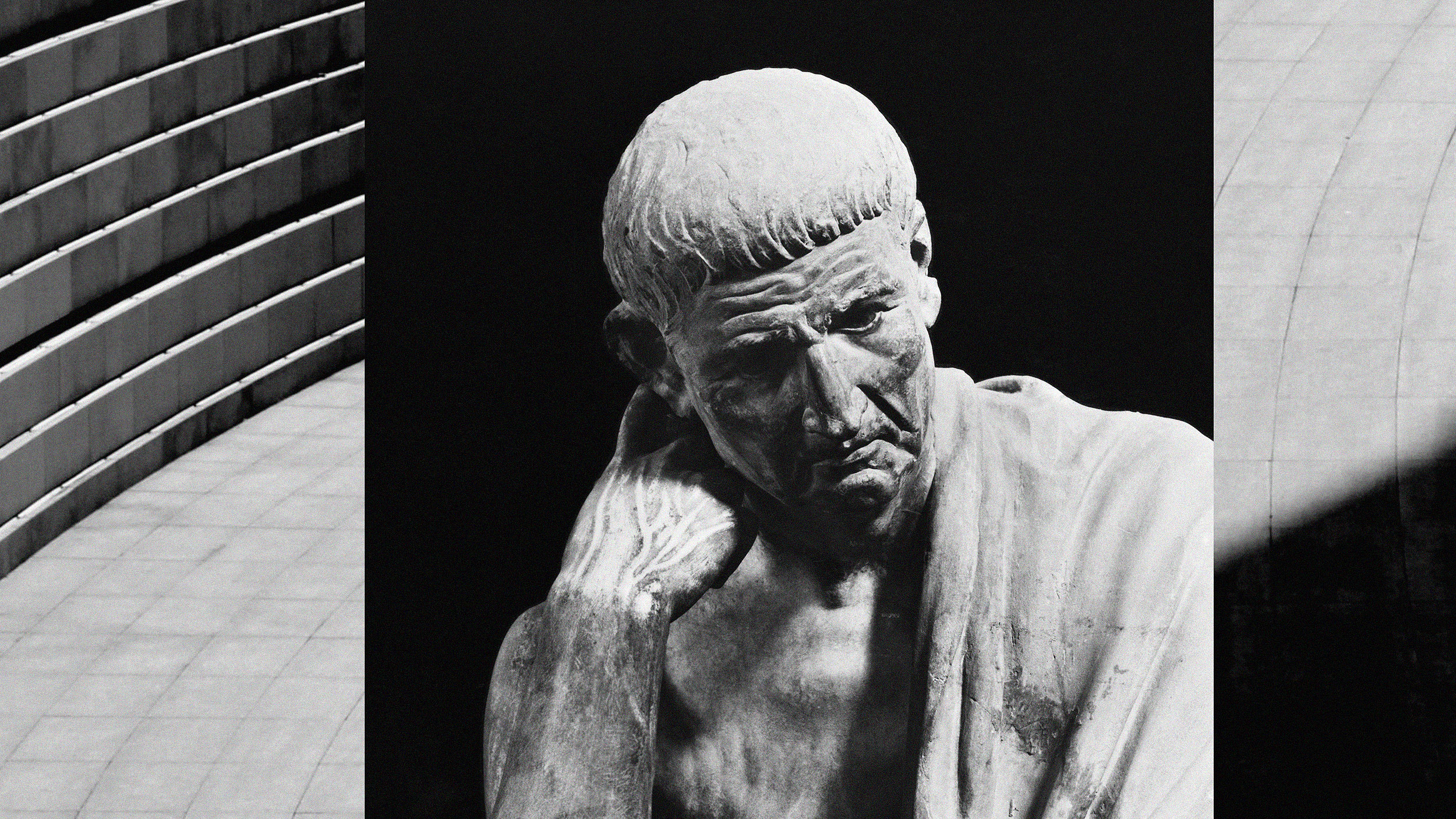Redefining Intelligence: Q&A With Scott Barry Kaufman

Scott Barry Kaufman (@sbkaufman) is an Adjunct Assistant Professor of Psychology at NYU, co-founder of The Creativity Post, Scientific American blogger, and a friend. He is also the author of Ungifted: Intelligence Redefined – The Truth About Talent, Practice, Creativity and the Many Paths to Greatness. It goes on sale today and I recommend it. Scott was nice enough to do a Q&A with me. Here is our conversation.
McNerney: It seems like the history of intelligence is the history of psychologists – with a few notable exceptions as you point out in the book – reducing intelligence into one metric measurable with one test and educators using that metric to label students. The good news is psychologists are successfully broadening our understanding of intelligence by studying it from many different perspectives. I’m wondering, however, why we spent so many decades pigeonholing intelligence? And what were and are the negative consequences?
Kaufman: I think that psychologists have long known that intelligence, even as measured by the IQ test, was not measuring a single ability. Nevertheless educators treated it as such and I think a big part of that is the early IQ tests didn’t assess multiple abilities.
In the earliest days of IQ testing in the United States gifted programs were entirely based on that global, single score. Lewis Terman was a big advocate of using the IQ test to measure giftedness. A negative consequence of that is it didn’t pick up on the more nuanced pattern of cognitive skills that a person can show.
It also relied too much on strict cut off scores. You’re either above a certain IQ cut off, 130 typically and you’re gifted, or you’re under that threshold and you’re ungifted. It kind of sets up this false dichotomy, and it limits a lot of people who would benefit from more challenging accelerated resources.
McNerney: After finishing the book I got the sense that psychologists and educators are headed in the right direction but there is still a lot of work to be done with respect to measuring and defining intelligence. So I’m wondering if you could discuss where we are at this point.
Kaufman: I think there’s a huge split between what scientists are doing to measure intelligence and what educators are doing for gifted education programs. Part of the point of the book is I wanted to integrate the different perspectives – the scientific perspective with the applied perspective – because I still think that they are miles away.
The predominant thread in intelligence research is understanding g – the general intelligence factor. That’s really what excites scientists the most – understanding the psychological and neurological basis of g. You also have multiple intelligence theorists but they are mostly on the periphery – they are still the minority in the intelligence field.
In the applied psychology world – and in education – there is this understanding of intelligence still coming from IQ tests but I think there is more of an appreciation for different patterns of strengths and weaknesses on IQ tests. In a recent survey that was done by Stephen Pfeiffer and his colleague on all the state definitions of giftedness in the United States and how they measured giftedness, there are still some clear big losers when it comes to our conceptualization of giftedness – creativity, motivation, leadership, and the performing arts. All these things are still not, for most states in the United States, considered forms of giftedness. Intelligence is still the major construct and IQ tests are still used as a major way to measure a person’s intelligence. Like I said, it’s also pretty much a one shot deal: you’re either gifted early on and you’ll be gifted forever, or you weren’t gifted early on and you’ll not be gifted, ever. That’s still our way of thinking about these things.
McNerney: One source of anxiety for students is other students. When we compare ourselves to others – and it’s nearly impossible not to – we suffer. There is always someone getting better grades or performing better athletically or artistically. Claude Steele and Joshua Aronson further demonstrate how racial and gender comparisons are detrimental to academic performance. You make the point that mindset plays a crucial role in engagement. I’m wondering what mindsets we can adapt that reduce the anxiety that comes from making social and academic comparisons.
Kaufman: Clearly the growth mindset (talent and ability can be improved with practice) is better than the fixed mindset (talent and ability cannot be improved). You’re absolutely right that we live in a culture of a fixed mindset, and schools are structured around that idea. (God forbid you transcend your age in terms of abilities, or you’re grades, or these enduring labels we get.) Kids are given test scores and don’t have dynamic assessment – so they’re given a grade but they’re not getting a chance to revise it.
All these things don’t operate in the real world – they are not conducive to flourishing at all. The growth mindset is key and I talk about that in the book. A lot of research shows what happens in the brain when you are put in the fixed mindset; you’re brain kind of shuts down in a way while the areas in the prefrontal cortex associated with self-evaluation become heightened. The brain is a limited resource, so the more you become critical and self evaluate (because you’re so afraid of failing and you believe that you won’t get a second shot since it’s all fixed) the less resources you’re going to have to display your intelligence, to express yourself, to create new things. The fixed mindset is a really big problem.
McNerney: We’ve heard a lot about 10,000 hours of deliberate practice (or the ten-year rule), the idea spearheaded by K. Anders Ericsson that expertise in any domain requires 10,000 hours of strenuous practice – the type of practice that targets our weaknesses. Could you explain deliberate practice, the 10,000-hour rule and the merits of each?
Kaufman: Ericsson defines deliberate practice as a particular state of being that is distinct from play and work. He makes this distinction: it’s an activity where you are working with a mentor who constantly pushes you beyond your limits and you are correcting for your mistakes; when you get to these sticking points the mentor helps you move beyond them. Since you’re constantly moving from state to state, as Ericsson sees it, the path from novice to expert is just a series of states. Everyone, no matter who you are, has to pass through those states. He argues that a person cannot skip all those steps without deliberate practice.
The other side of the field – which is like 90 percent of the field – argues that this kind of state of practice does not fully explain the emergence of a genius. It may differentiate an expert from novice but it does not differentiate the genius from the expert. There is something more going on there.
Talent is usually offered as the other major piece. But I was really curious: what is talent? How is it intertwined with deliberate practice? I define talent in the book as a passion or proclivity to master the rules of a domain. I think that’s the best we can do in defining talent when you actually look at what it really is. But that is an explanatory variable, so when you put that into the picture you can sort of see it this way: the more talent someone has – the more passion or proclivity someone has for mastering the particular rules of a domain – you see the less it looks like they are deliberately practicing.
You asked about the ten-year rule. It’s becoming clear that it’s not a rule; it’s an average.
McNerney: Would you call it a rule of thumb?
Kaufman: I wouldn’t even call it a rule of thumb because there is so much variability across fields. The fields that have been traditionally studied do conform to the ten-year rule: chess and music for example. But there are lots of other fields where the average is not ten at all. There are gross differences and trajectories. So to make these grandiose generalizations across all fields is leaving out so many nuances – it depends what field you’re looking at.
And within each field there’s huge variability. There are late bloomers as well, so the variability goes in the other direction. You see people taking 26 years, but they get there. I’ve done research on creative writing with James Kaufman. Creative writing tends to be a field where you see huge variability at both ends of the curve. The question is: if you produce something of extraordinary work after 26 years instead of 10 years does that make you any less of a genius? You still did genius level material. As far as I’m concerned who cares how long it took.
McNerney: The nature-nurture dichotomy is a false one. I’m wondering what the best way to think about nature-nurture is with respect to intelligence. In other words, how do genes and the environment interact to create intelligence, creativity, talent and other components you talk about in the book?
Kaufman: In my new theory of intelligence I don’t really view these constructs as different things. I view them all as being under the broader umbrella of personal intelligence. I think nature-nurture is one in the same because it’s all part of this re-conceptualization that I want to argue for potential – what it means to have potential or what it means to have ability.
Engagement and ability are absolutely inseparable. This is something we have not come to terms with in any theory of intelligence. We leave motivation and engagement out of the picture. We leave it out of the gifted education programs and we leave it out of intelligence research. Some intelligence researchers think that they don’t play a role in intelligence, and I think that’s wrong.
The intertwined nature of nature and nurture suggests that our genes drive us to engage in the world and view certain stimuli as exciting and interesting; they also make us ignore other information. I talk a lot in the book about implicit learning. I think that’s a wholly unrecognized area of research. Our genes are driving us subtly and indirectly to consume certain information and learn about the world – genes are mechanisms of experience, they are learning mechanisms. A lot of these people who look like prodigies or gifted kids, then, aren’t born with all this knowledge; what they were born with is how I define talent: a passion or proclivity to master the rules of a domain.
That’s why engagement and ability, in my conceptualization of intelligence, are inseparable; they are constantly feeding off each other. The more resources you give someone to engage in something they have a proclivity for the more their ability will grow and the more their potential will grow as well. Potential is a moving target. Once you view the world that way, I think a lot of things that seem like puzzles fall into place quite clearly.
There are too many cases of people far surpassing what was predicted of them when they were young. We’ve come to a point in our understanding where we really need to rethink this stuff because there is so much research showing that all these things we think are the best predictors of “potential” do not really turn out to be such great predictors. We must come to terms with that fact and recognize that that’s because potential is a moving target.
Take the weight example. People who are obese when they are young are said to have a small potential to be skinny when they are older. But if that person fundamentally alters their body through intense training, what they are doing in that engagement is changing the potential or the odds. When they are older and have shred all that weight, their potentiality for skinniness is almost 100 percent. This is driven so much by engagement, which is why I argue in my reconceptualization of intelligence that we need to give all children the opportunity to engage in more challenging intellectual material if they are ready for it without requiring an arbitrary IQ cut-off.
We’re learning about so many different kinds of minds who are capable of extraordinary intellectual accomplishments and creative accomplishments. Unfortunately, we are letting them fall between the cracks because of our fundamental misconception of potential.
Thanks Scott!
Image via Shuttershock/Lightspring





